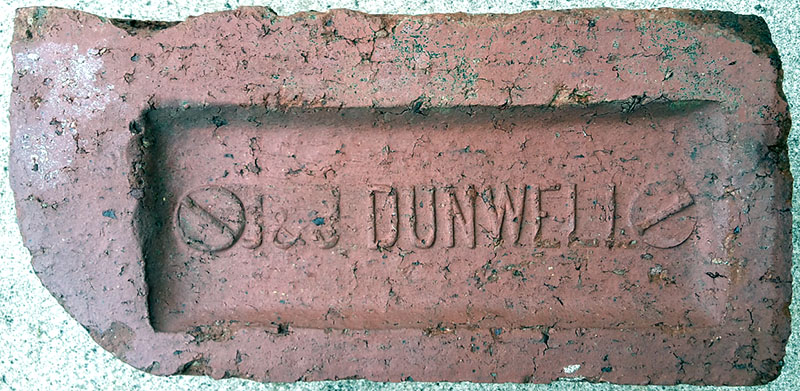

J & J Dunwell. Bullnose brick, with the same name in the frog on both sides and made in Grosmont. The works is listed in Kelly's North & East Riding Directory 1913. Photo by Carla van Beveren.
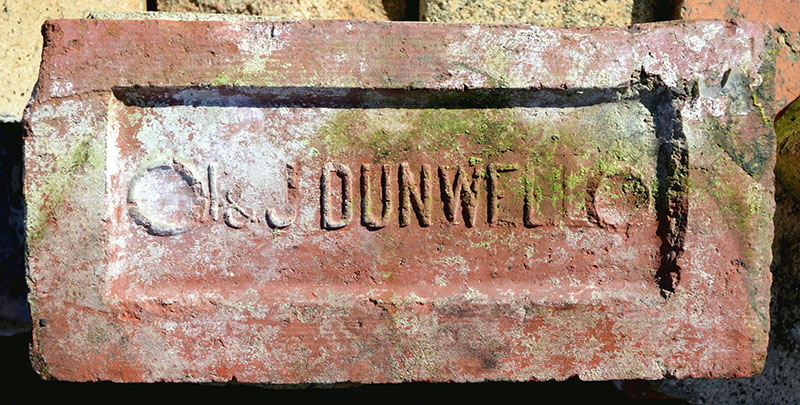
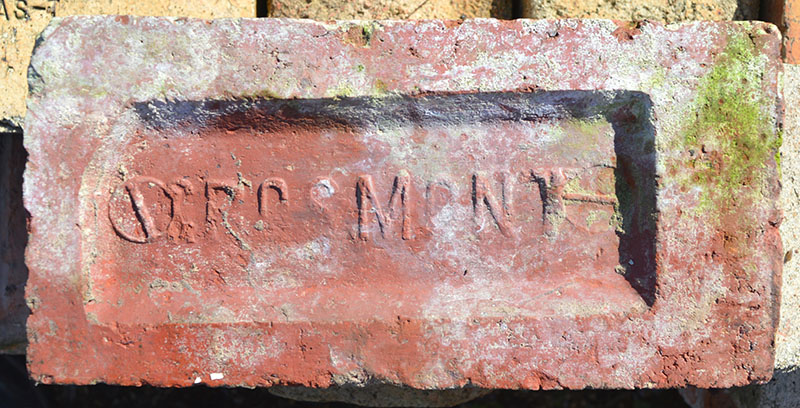
Photos by Frank Lawson.
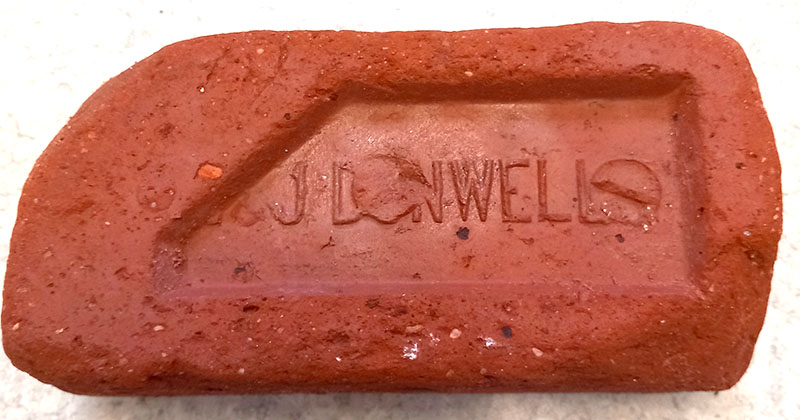
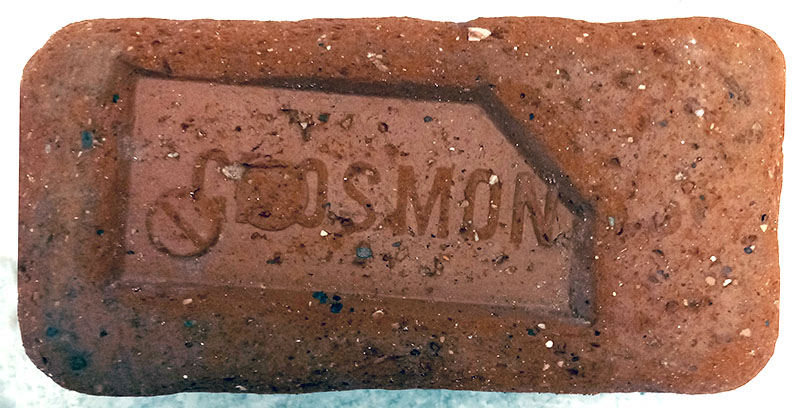
Photos by Jane Gough.
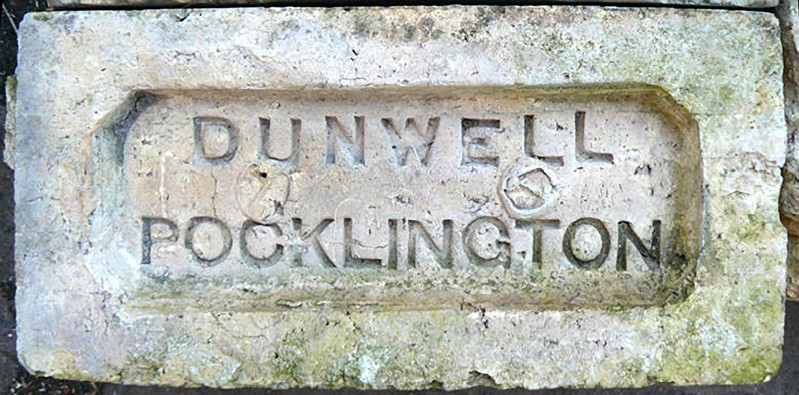
Photo by Andrew Boyce.
Photo courtesy of the Pocklington History website
John Nottingham has researched the Dunwell's and found the 1901 census had James Dunwell's brickmaking son Alban living on Burnby Lane (near the Workhouse, so was presumably then running the Pocklington Brick & Tile Yard). By 1911, he was running the brickyard in Darlington and the census return shows Alban and his family were living nearby. However, note that both their sons are recorded as having been born in Pocklington, their births being registered at Pocklington in 1902 and 1904 respectively, so it looks like they were living on Burnby Lane probably throughout the period of at least 1901-1904 (having married in Sheffield in 1900). John's opinion is that 'J & J Dunwell' were most likely to be James and his younger son Joseph (James's grandson also James was too young to be a brickmaker)James Dunwell was a brickmaker from Leeds, then moved to the Mill House in Egton Bridge with his son Alban by the 1891 census. Both were brickmakers so presumably commuted by train to and from the big brickyard up the line at Grosmont (just North of the station, opposite the ironworkings). They may never have been based at Pocklington but, like the several others, were the owners and/or managers (Alban was living a couple of doors from the Workhouse on Burnby Lane in 1901). In 1901, James and younger son Joseph were living in Darlington, both brickmakers, so were most likely to be the 'J & J Dunwell'. (Note the 'screwheads' on the frogs, characteristic of other Pocklington products.)
James died in Darlington in Q3 of 1907 - cf. 'James Dunwell (Trustees of), Brickmakers' in the 1905 and 1909 Kelly's Directories for Pock (see above). It is uncertain to what then happened to Joseph but Alban was Manager at the brickworks in Darlington by 1911.
Info from the Pocklington History website.
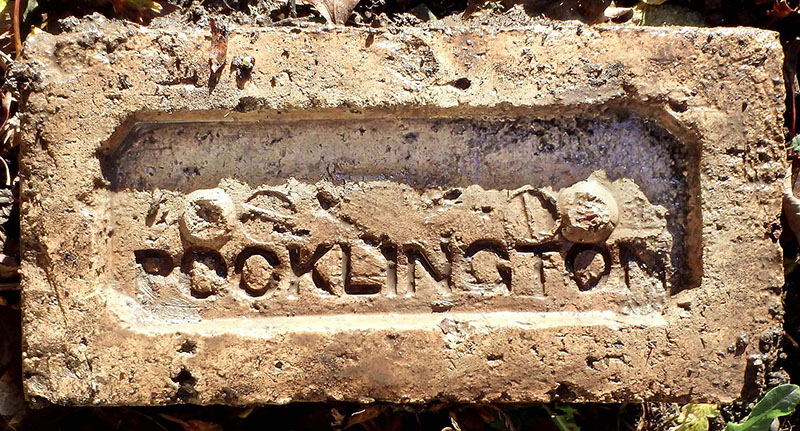
Photo by Frank Lawson.
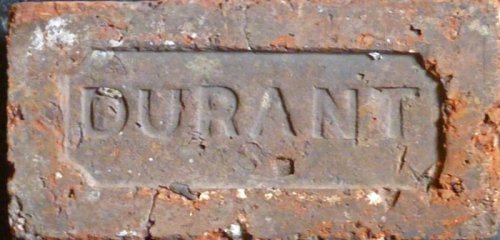
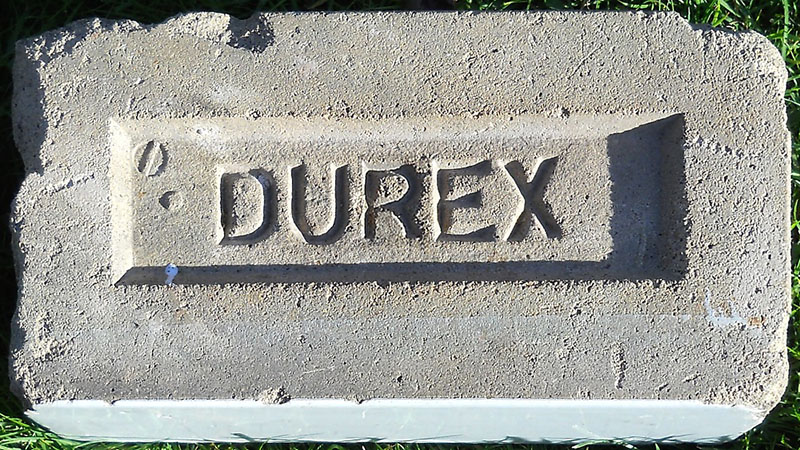
In the early 1900’s, Stanley Bros. Ltd. opened a new yard, No. 5, in the Bermuda district of Nuneaton to use clay extracted from the Newdigate Estate. Producing only blue building bricks and paviors, the bricks soon became ‘well known for their excellence of colour, shape and durability’. This led Reginald Stanley and the Company to decide they needed a registered trademark that could be applied to their bricks to create a distinctive brand. The exact explanation for the trademark is unknown but it is usually accepted that the Stanley Bros. catalogues provide the answer with the qualities of the bricks including both the words DURability and EXcellence. The ‘Durex’ trademark was accepted and approved by the ‘Office for Patents, Designs and Trade Marks’ in London with the Certificate of Registration, No. 251663, issued in April 1903. This was initially valid for 14 years from 22nd January 1903 but later extensions kept it valid until about 1967. Often the bricks were white glazed on one side, intended for the construction of bakeries, kitchens and butchers premises and for toilet blocks, anywhere where the ease of cleaning was an important factor. The London Rubber Company registered a similarly named trademark in 1929. This was permitted as the trademarks were for different classes of items. The brick was rescued from a public toilet demolition in Worksop, Notts by Tony Bak. Photo and info by Ray Martin.
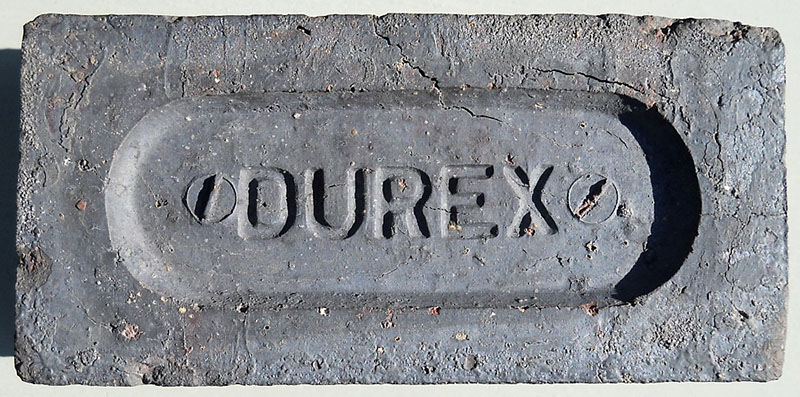
Photo by Ray Martin.
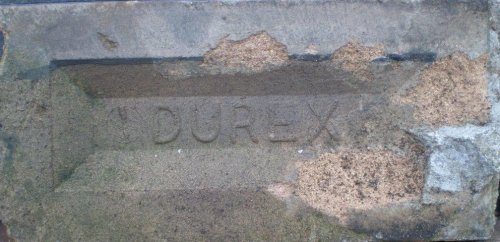
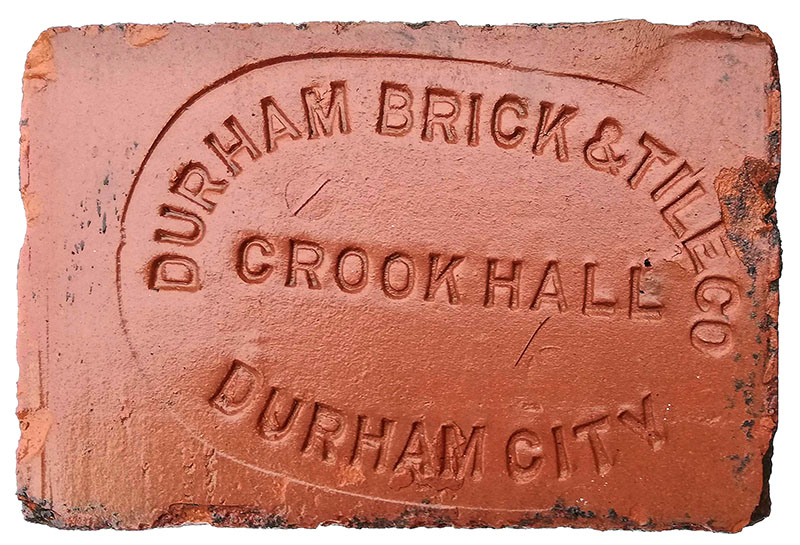
Photo by Chris Tilney.
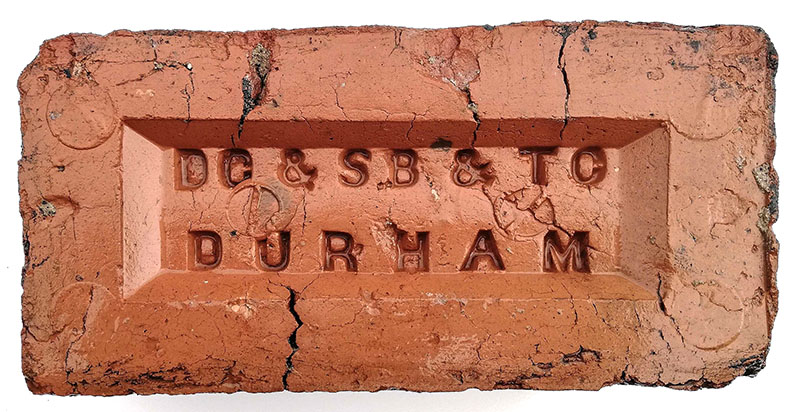

Photos by Chris Tilney.
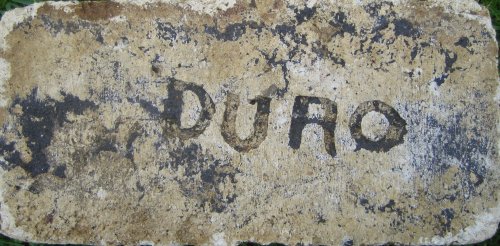
Found by Malcolm Smith on the Camerton Brickworks site near Workington.
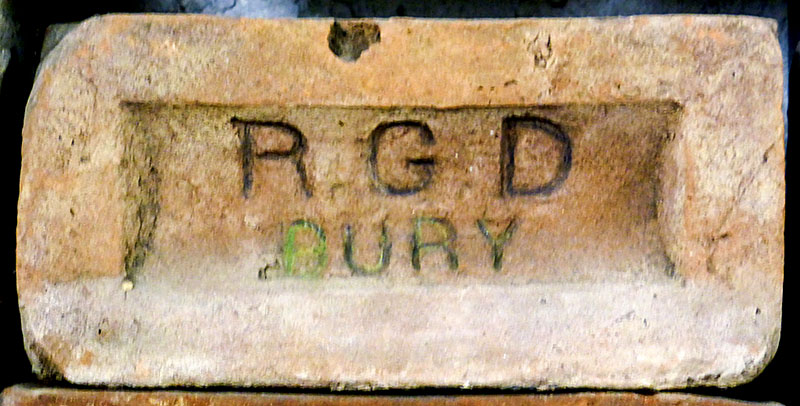
Robert George Durrant is listed at the Southgate Works, Nowton Road, Bury St. Edmunds, Suffolk in Kellys 1865 to 1879 editions. He had re-started the family’s brickworks in 1859. Durrant closed the works in 1896, but was again re-opened by the Bury St. Edmunds Brick Co. two years later. Photo & Info by Martyn Fretwell.
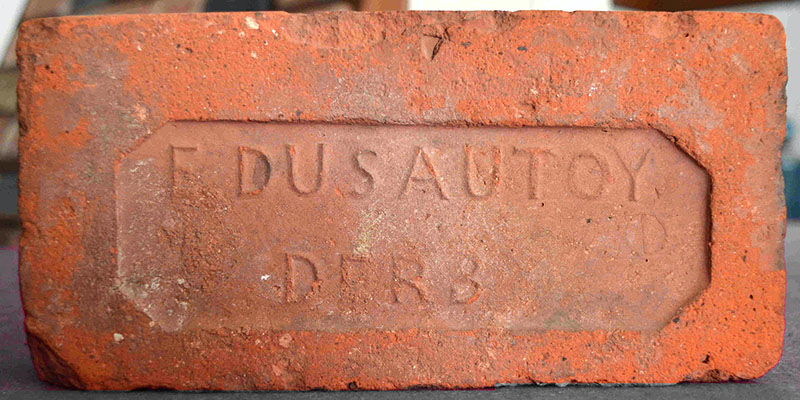
Photo supplied by A.K.A. Demik.
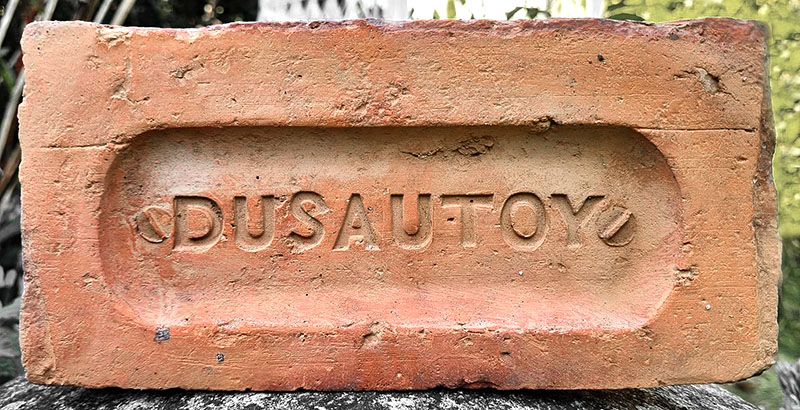
Edward Dusautoy, owned the California Brickworks, Stockbrook Fields, which was on Stockbrook Street in Derby. He was born in Canada around 1821. After moving to Derby he lived on Green Lane and traded as a building contractor as well as being the owner of Rowditch Brick Works on Parcel Terrace, California Brick Works on Stockbrook Street and a saw mill on Stuart Street. At a time when many building firms were little more than a partnership of a bricklayer and a joiner, Dusautoy employed 140 men and 16 youths and boys in 1871.
He was well-placed to tender for the construction of a wagon repair workshop in the Midland Railway's Chaddesden sidings. It was the largest building in Chaddesden at the time of its construction in 1873-74. It was to be one of his last projects as he died in September 1874. His widow and executors kept the business going for several years, it was still trading with an office at 4 Albert Street according to Kelly's Directory for 1881 and 1904.
The California Brickworks is then recorded in Kelly's 1908 edition as being owned by the Derby Brick Company, who also owned brickworks on Uttoxeter Road & Slack Lane in Derby. In the Derby & District Trade Directory, 1921 edition, DBC is recorded at Stockbrook Street & as being managed by George Dusautoy, residing at Warwick Avenue, Littleover. So the Duasutoy family may have been the owners/part owners of DBC after Edward had finished brickmaking. Photo by Andrew Kemp, info by Peter Barnes and Martyn Fretwell.
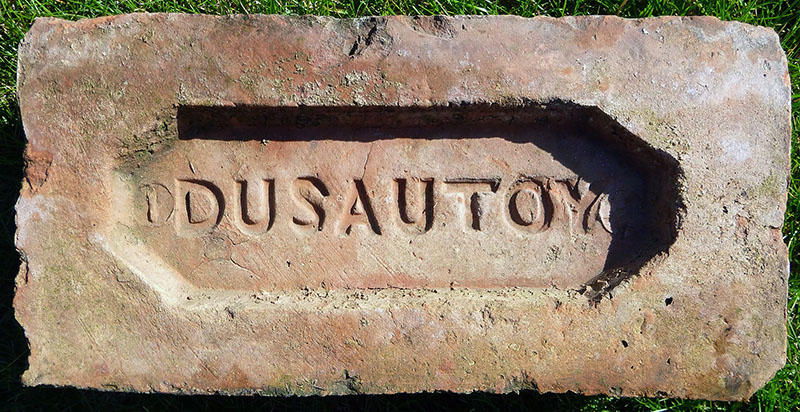
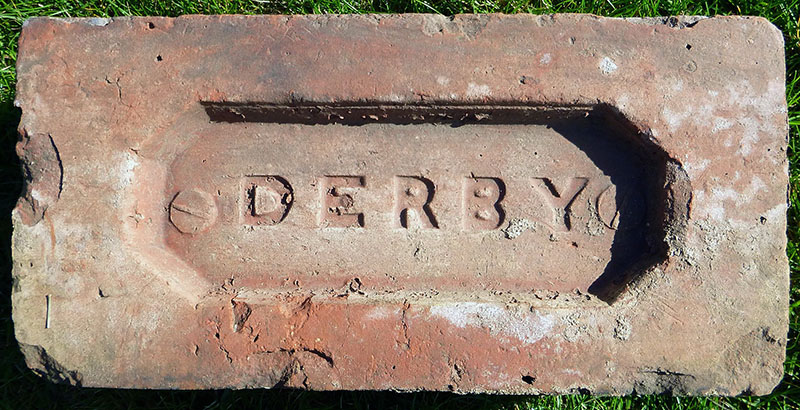
.jpg)
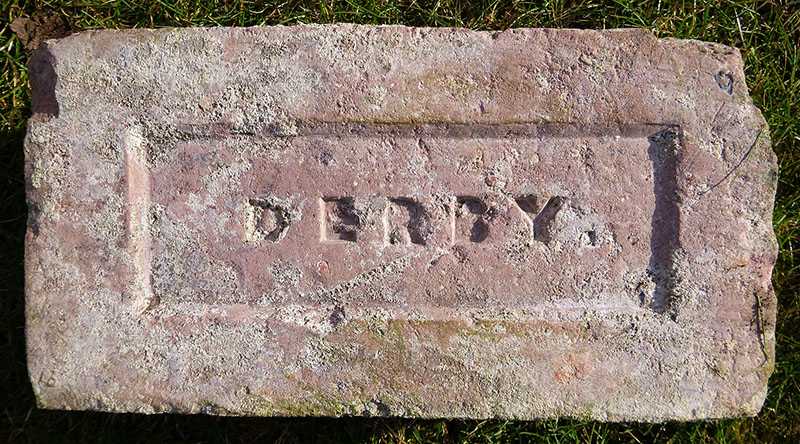
Front and back images. Photos by Frank Lawson.
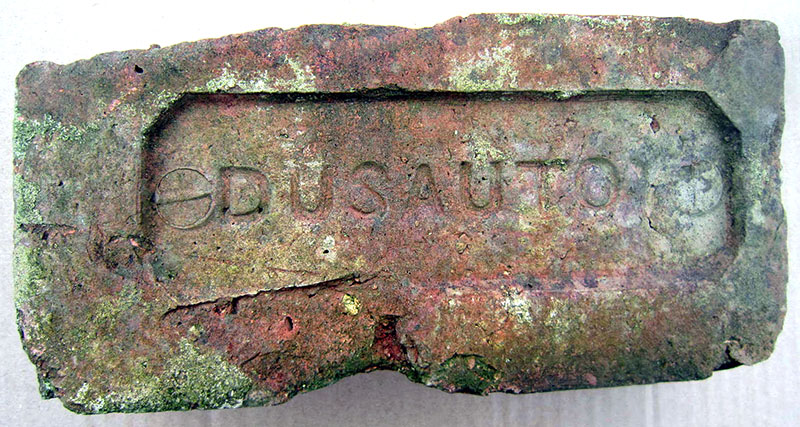
Photo by Peter Barnes.
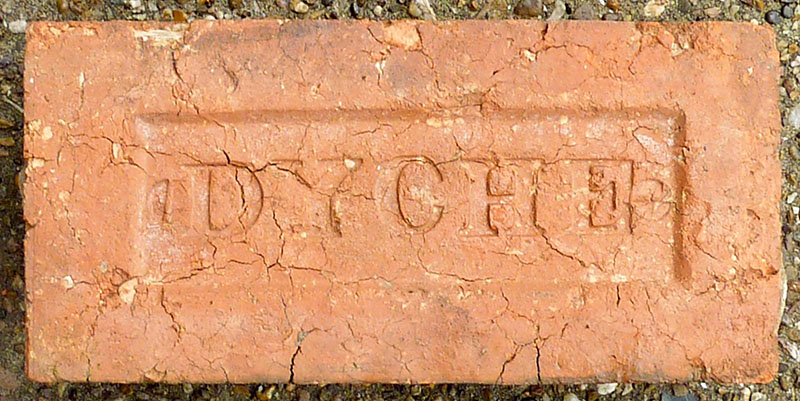
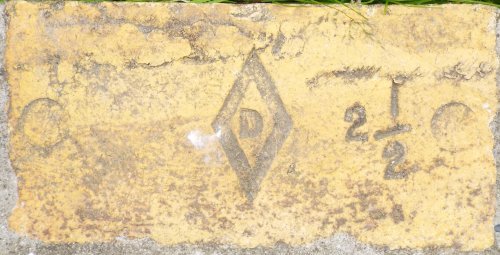
A major Sheffield based manufacturer. Found at Holyhead
Breakwater Park, Anglesey.
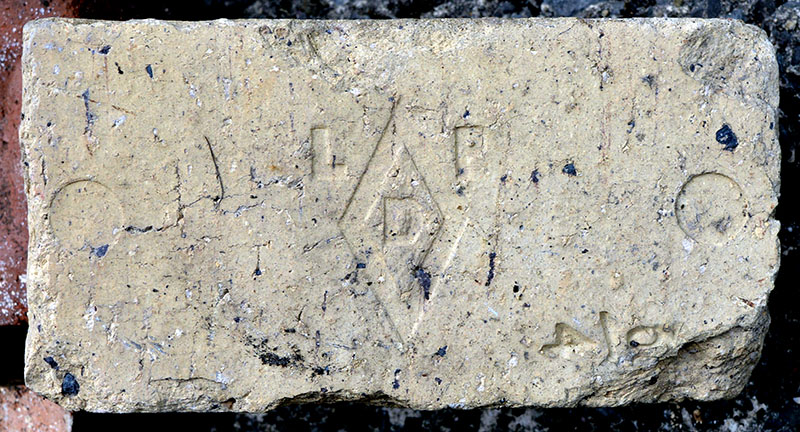
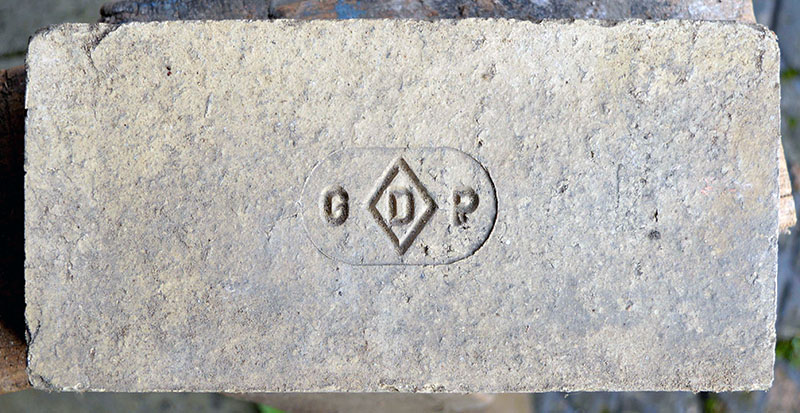
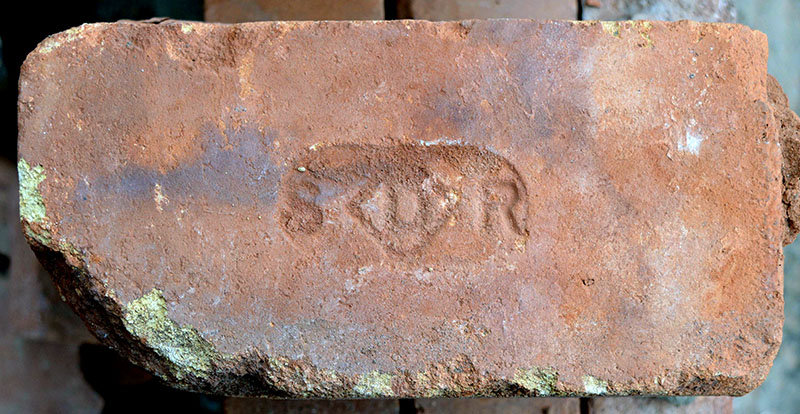
Dyson Group PLC, Baslow Road, Totley, Sheffield. This
is a modern firebrick made by the Dyson Group PLC. Although its
Head Office address is Totley, Sheffield this brick may well have
been made at one of its other brickworks in Bonnybridge,
Scotland. J & J Dyson (later Dyson Refractories
& Dyson Group PLC) were founded at Stannington, Sheffield in
the early 19th century and are manufacturers of refractory
products mainly for the steel industry. In 1967 they took over the
Bonnybridge, Stirlingshire works of James Dougall & Sons Ltd.
& also owned works in Crook, Co. Durham. Found Barton on
Humber. Photos and info by Frank Lawson.
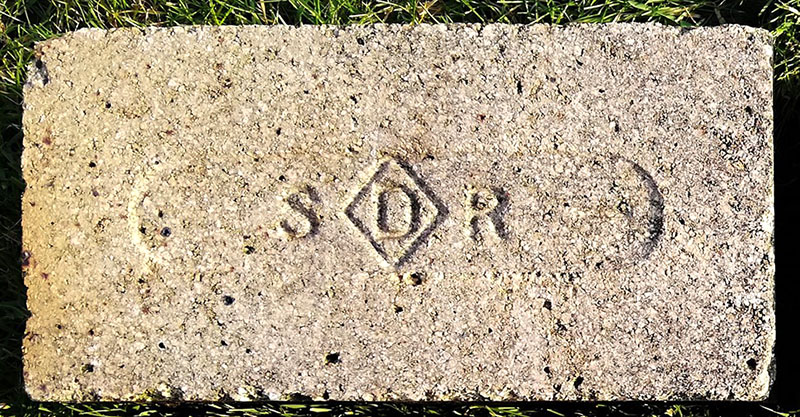
Photo by Chris Tilney.
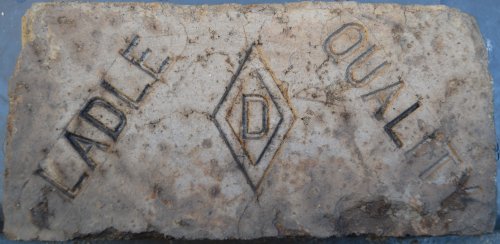
Found in Barrow in Furness by Richard Comish.
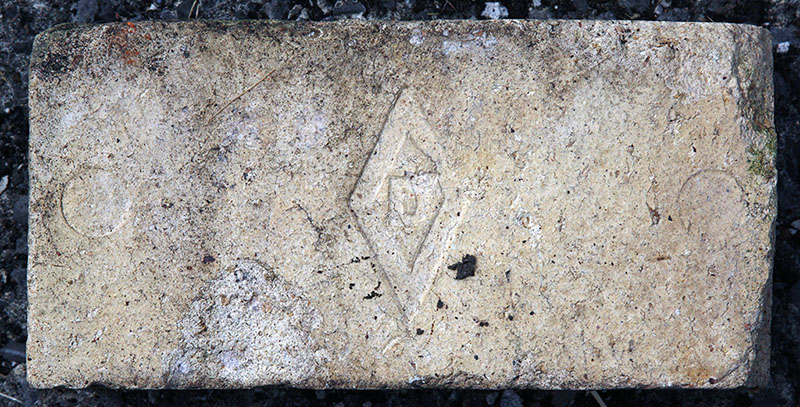
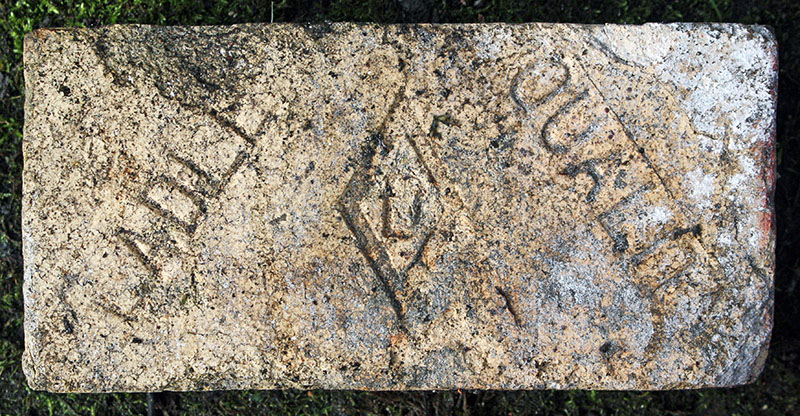
Photos by David Kitching.
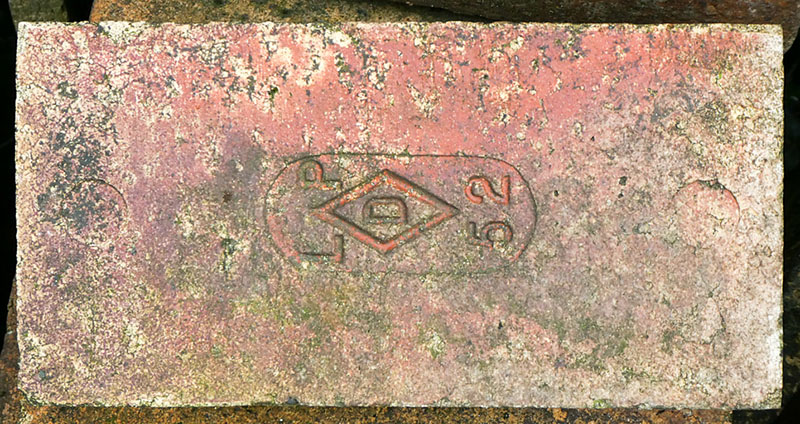
Photo by Martyn Fretwell.
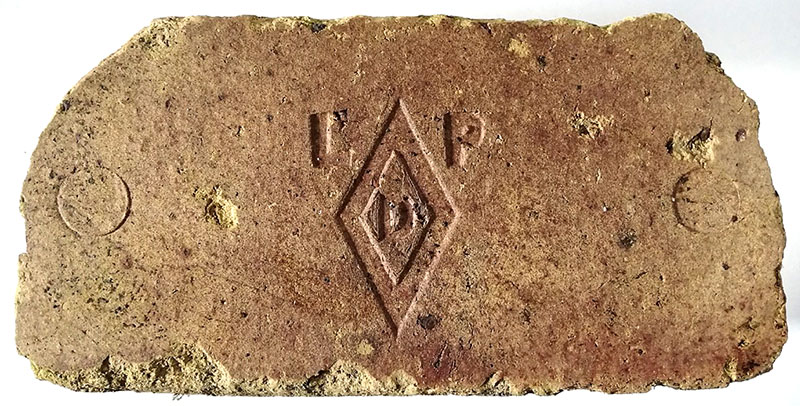
Photo by Chris Tilney.